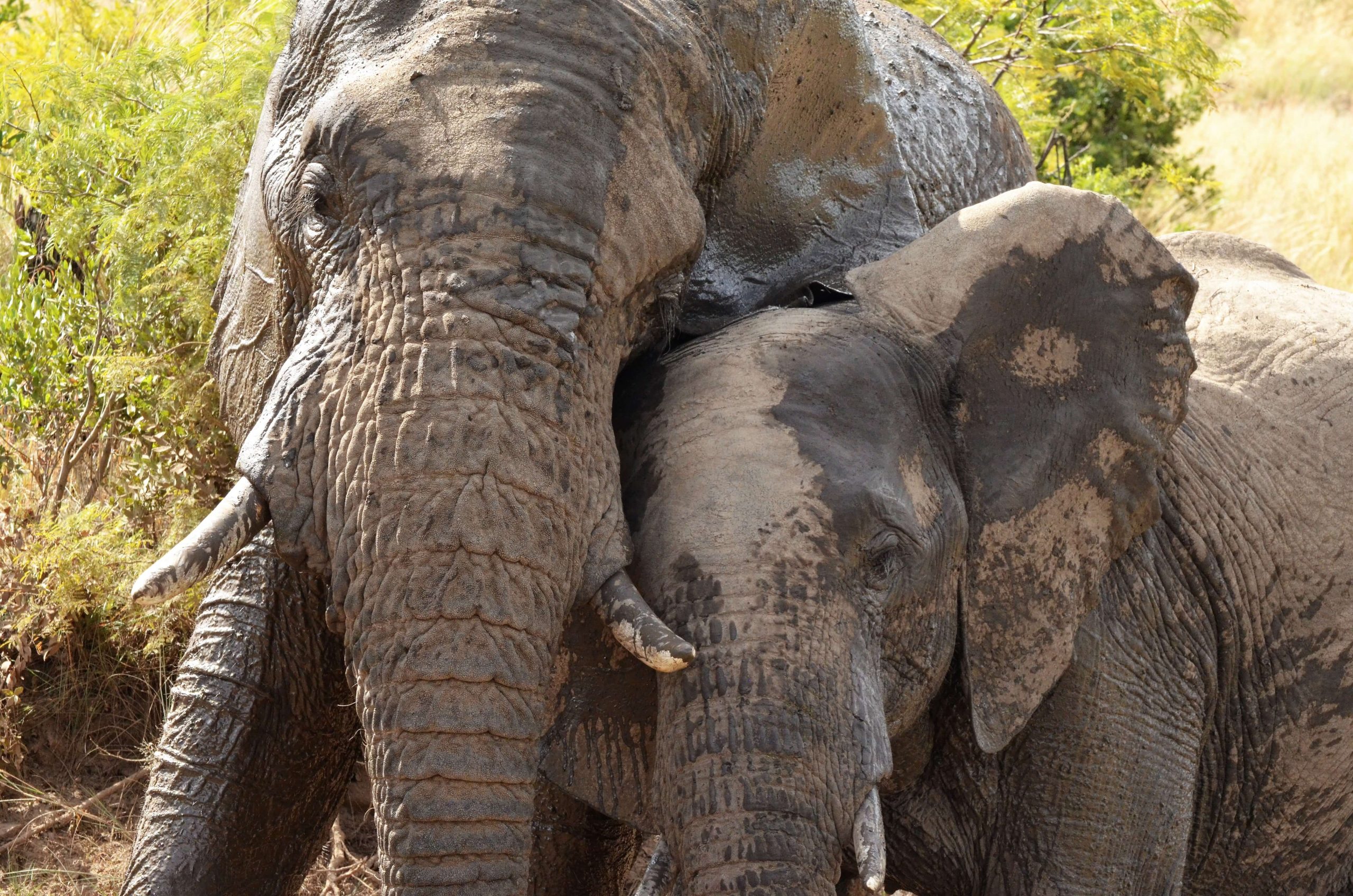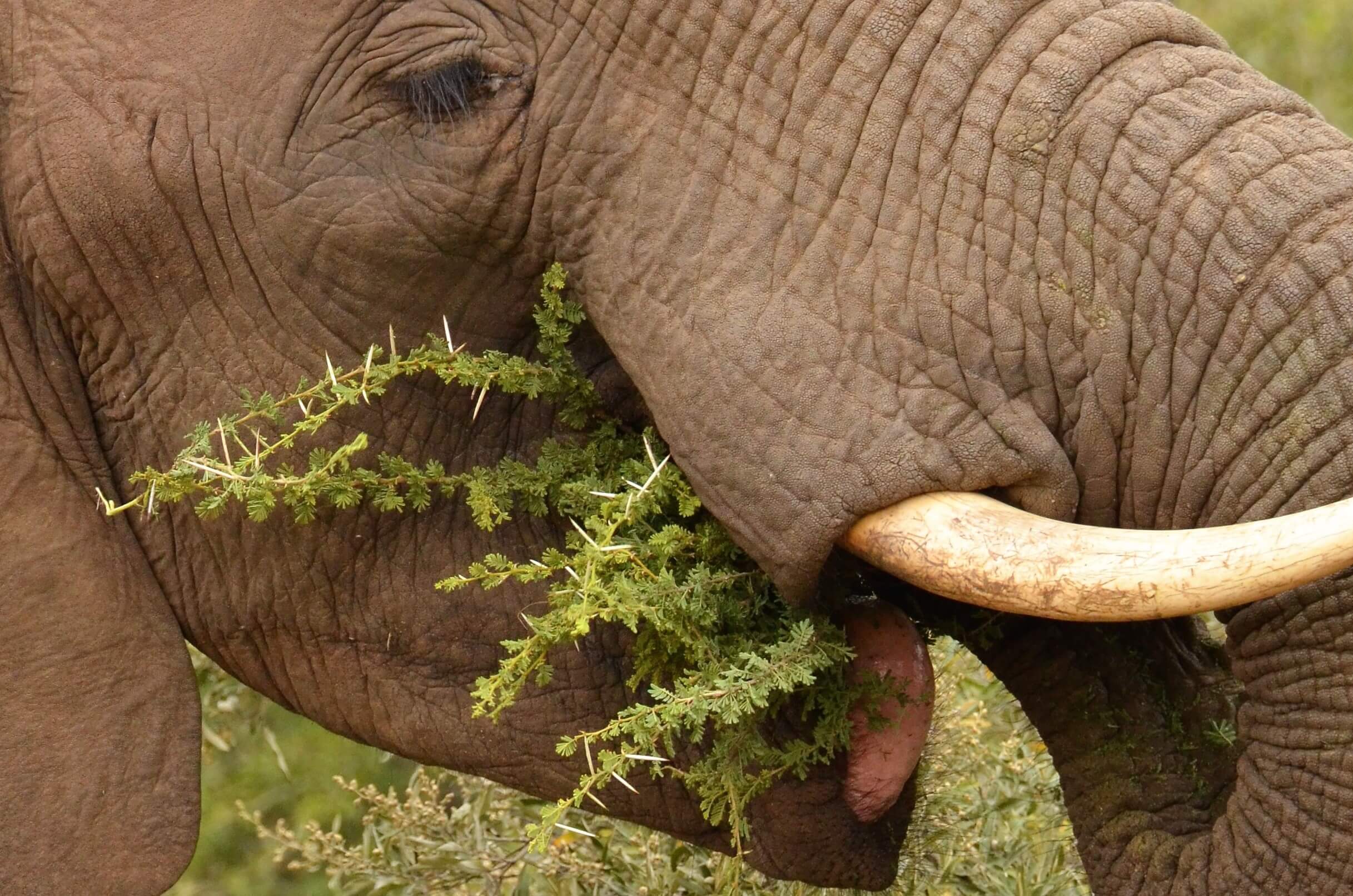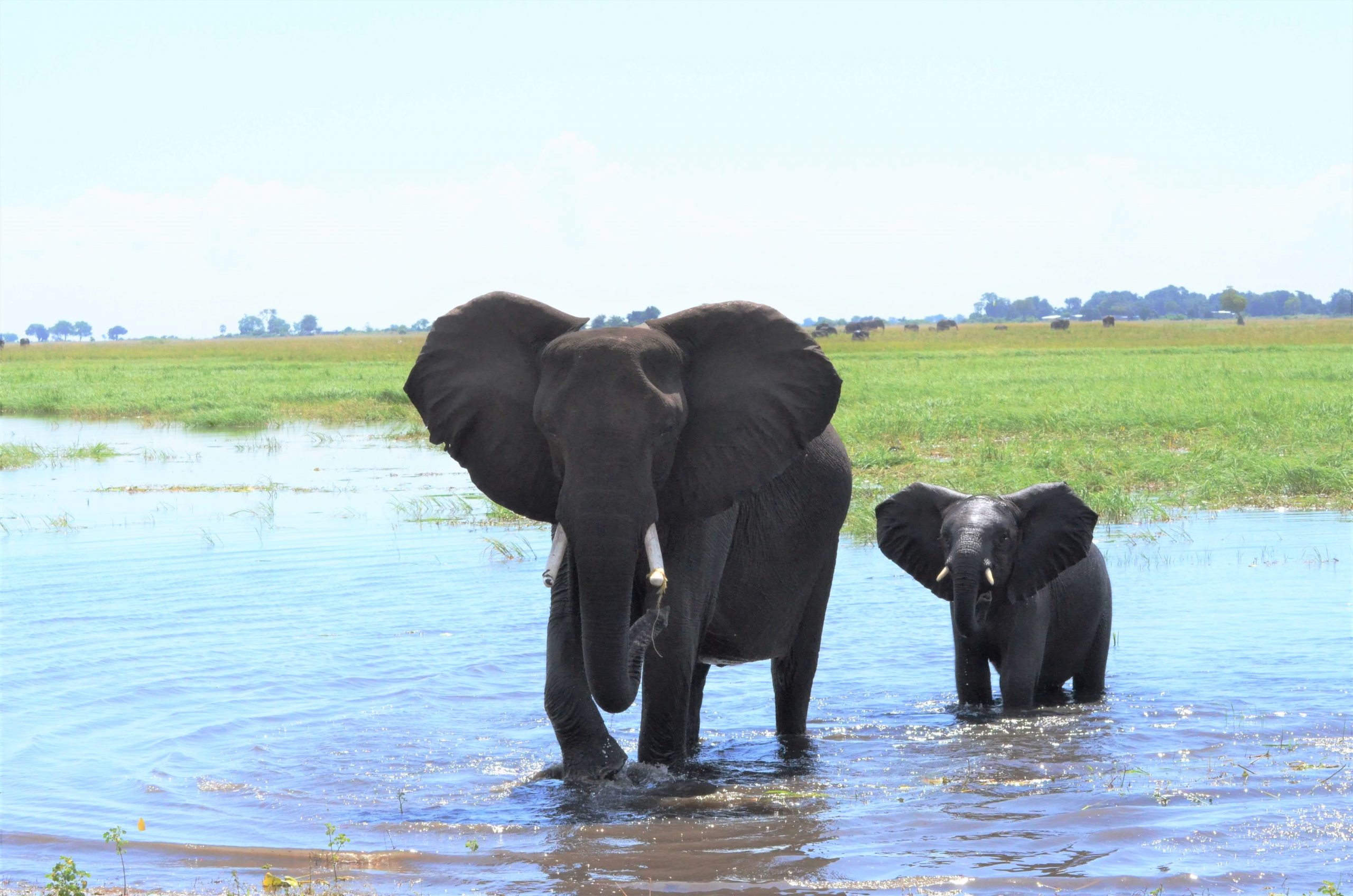One of the main reasons people travel to Africa is to see the wildlife. That’s why we write a series of blogs about different animals that you can find on safari in Malawi. We share not only the did-you-know’s, but also interesting stories. On social media we asked our followers which safari animal to start with. The elephant came out as your favorite!
Elephant facts
The African elephant (Loxodonta africana) is the largest land animal in the world. An adult bull weighs an average of 6000 kg and has a shoulder height of more than 3 meters. It is one of the most intelligent and social animal species. Elephants feel each other’s emotions and cuddle to offer support in difficult times. They do this especially with their trunks while making very low reassuring sounds.
An elephant reaches sexual maturity from about the age of 12. The adolescent boys are then kicked out of the herd and often join an adult bull who serves as a role model. The girls spend their whole lives with their mothers, aunts and sisters in the herd. Here they help to raise the youngest calves. Even though they are sexually mature, the matriarch (the female leader) usually only allows them to mate a few years later. They’ll probably get this protectioning to grow a bit larger first. An elephant cow is pregnant for about 22 months and then suckles her calf for 2 to 4 years, after which she becomes pregnant again. After a few months, an elephant calf drinks almost 12 liters of milk a day! Fortunately for the mother, they then also start eating more and more solid plant material. Elephants live up to 50 – 65 years and get about 7 little ones in their lifetime, which are lovingly cared for by the whole family.
Conflicts with elephants
The elephant population in Malawi is growing considerably. This is largely due to the efforts of the non-profit organization African Parks, which is managing Majete Wildlife Reserve since 2003. In 2015, Liwonde National Park and Nkhotakota Wildlife Reserve were added to their portfolio. The few remaining elephants in those parks, regularly got into conflict with the small-scale farmers in the area. Elephants ransacked the fields, leaving families without food and income. As a result, elephants were shot at and snares were set. Usually causing painful wounds and slow deaths for the elephants. African Parks has partnered with the Malawi Department of National Parks and Wildlife to protect both nature and people. Education always plays a vital role in this. In addition, they started a project near Majete Wildlife Reserve with beehives around the farmland. Despite their thick skin, elephants are very sensitive and they are especially afraid of being stung in their trunk. The presence of bees has reduced conflicts with elephants by 80%. As a bonus, the sale of honey generates additional income for the local farmers. Around Liwonde National Park they now started a similar project with chilli peppers, which also seems to keep the elephants away. https://youtu.be/T-pV3jfdhvg
Where in Malawi can you see elephants?
Malawi, like most African countries, once had huge numbers of wildlife. Large herds passed through the plains and through the woodlands, but unfortunately this has come to an end because of an ever-growing population. Fortunately, nature conservation is becoming a priority in Malawi and several protected areas and projects are now setting an example for other countries. Not all parks are fenced off, mainly depending on the amount of people living in that part of the country. This means there is more freedom of movement for wildlife, especially in northern Malawi. On the western border lies the spectacular Luangwa Valley ecosystem in Zambia. The better the nature reserves in northern Malawi are protected, the more wildlife will cross the border from Zambia. This will especially positively affect Nyika National Park and Vwaza Marsh Wildlife Reserve. In the latter, elephants are regularly spotted, as are more and more other animals
A little further south there are now quite a lot of elephants in Nkhotakota Wildlife Reserve, although the vegetation makes it difficult to find them. In the huge Kasungu National Park, the lodge is located at one of the few watering holes, so with some luck you can see elephants there. The Thuma Forest Reserve and recently protected adjacent Dedza-Salima Forest Reserve still have elephants in the mountains, but these are very shy and the difficult terrain makes spotting hard. By far the best places in Malawi to see elephants are Liwonde National Park and Majete Wildlife Reserve in the Southern Region.
An elephant translocation that put Malawi on the map
The successful management of Liwonde National Park and Majete Wildlife Reserve by African Parks has ensured that both parks now have a healthy elephant population. In fact, so many little ones were born in recent years that elephants could be moved to other areas in Malawi. The first project was immediately one of the largest ever around the world. Not bad for such a small country!
About 1,500 elephants lived in Nkhotakota Wildlife Reserve, but years of poaching left only 100 when African Parks took over management in 2015. For the first two years, they worked endlessly together with surrounding villages to stop poaching and make the park a safe place. A total of 486 elephants from Liwonde National Park and Majete Wildlife Reserve were then moved to Nkhotakota Wildlife Reserve along with a number of other wildlife species. African Parks also brought an additional 34 elephants from Liwonde to Nyika National Park. This successful translocation of more than 500 elephants has gained a lot of international recognition from respected conservation players.
Then an elephant went on a stroll
However, one of the young elephant bulls did not feel at home in Nkhotakota and broke out. He decided to walk southwards, in the direction of his previous home. His journey took him not only through forests and plains, but also past villages and fields. This was a potential danger to the locals and to himself. Authorities decided to put down the northern fence of the Thuma Forest Reserve and guide the elephant in by helicopter. And it worked, the elephant was, at least for now, safe!
The Thuma Forest Reserve in central Malawi is under the management of the non-profit organization WAG: Wildlife Action Group. You rarely meet such hard workers with an infinite passion and love for nature. They are doing everything they can to restore the bush and protect the remaining wildlife. Successfully, because the numbers are slowly increasing again. In Thuma you will find mainly antelope species, but also buffalo and even elephants. The troublemaker, that escaped from Nkhotakota, soon felt at home in Thuma, so no further plans had to be made. Nowadays, he often forages around the camp and he has even been given a name: Mr. M.
Future of elephants in Malawi
It’s fantastic how well the elephants and other wildlife are doing in Liwonde National Park and Majete Wildlife Reserve, so these places can serve as ‘’breeding grounds’’ for other parks. Once a place is well protected, the animal populations grow naturally, but this can take years. Especially if certain species are locally extinct!
Fortunately, African Parks really intends to help develop the whole country and even all of Africa. The next step is to move 150 elephants from Liwonde to Kasungu National Park. With financial support from the Netherlands, among others, IFAW has been doing great conservation work here for years. They even established their own training camp for rangers and the number of poachers has decreased considerably. Now it is safe enough to almost triple the remaining 80 elephants in number. It seems that elephants in Malawi have a bright future. Ecotourism plays a vital role in this. That income contributes to the protection of those gentle giants and all other wildlife. We look forward to going on safari with you and spot elephants in Malawi! Here you can read more about all the different reasons to travel to Malawi.







0 Comments